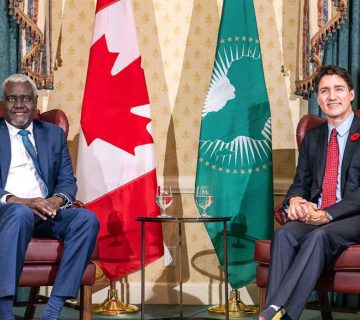The last thing that a region riddled with protracted conflicts and political uncertainty, and struggling with post-COVID-19 recovery; rising energy and food prices; and unfavorable climatic conditions needs is increased exposure to terrorism. Not in the least because issues such as these produce grievances and compound vulnerabilities of marginalized and other ‘at risk’ communities. These predispose them further to exploitation, including by political elites, and militant groups. Yet, bourgeoning terror is exactly what the region has been contending with but not fully appreciative of in recent months, the noticeable thirst for peace and stability notwithstanding. Given the positive association of long-drawn conflicts with terrorism, this is expected, but it portends more regional insecurity and is telling of gaps in counterterrorism (CT), both of which are concerning. Thus, appraising the rising threat, and renewing the resolve to address the root causes of terrorism intra-state and cross border are imperative.
More Terror, No Peace
In the past three years, the number of terror groups impacting the region the most in more than one country has grown to three, and now also includes the Allied Democratic Forces (ADF), and Al-Sunna wa Jama’a (ASWJ) – in addition to al Shabab. The three are US-designated terror groups; the first two since March 2021. The number of countries that have reported a rise in terror-related attacks has also increased in a similar period, and now includes DRC, Uganda, and Tanzania, according to the Institute for Economics and Peace. Since February 17, 2022, Operation Barkhane has been drawing down from parts of the Sahel, which the Chad-Sudan border links to the greater Horn of Africa. The impact of this politically-motivated withdrawal is unestablished, but the likelihood that it will increase the region’s vulnerability to other growing and deadly groups such as the Islamic State in the Greater Sahara (ISGS), and Jamaat Nusrat al-Islam wal Muslimin (JNIM) and worsen a bad situation is high.
This outlook brings two key trends to the fore. First, transnational violent extremist groups affiliated to al Qaida and the Islamic State (IS) are making more inroads into the region. This is the result of changes in operational strategies such more collaboration between violent extremist groups and insurgent groups in target locations. It is also a reflection of increasing vulnerabilities and fragilities that COVID-19, weak economies, and poor governance exacerbate. The problem with a growing number of young people without gainful employment or access to basic needs is two-fold: extremist groups are known to disproportionately target young, disenfranchised individuals, and the chance of civil unrest increases when the cost of living becomes unsustainably high and the masses’ struggle for survival becomes acute.
Secondly, the region’s CT strategies are generally out of step with current realities. For instance, it is emerging that the region is now also prone to ADF- and ASWJ-related threats, as the Democratic Republic of Congo (DRC), Uganda, and Tanzania are realizing. However, many states are still either attributing terrorism in the region to al Shabab, or distancing the threat by linking attacks to groups based in another country. Additionally, even when an attack bears the hallmarks of a specific group, authorities in some countries are having a hard time telling perpetrators apart and distinguishing between rebel attacks and terror attacks as ongoing ADF attacks in eastern DRC exemplify. One of the net results of the two trends is rising insecurity, which, unmanaged, is potentially destabilizing. The already volatile region cannot afford more instability.
Looking Back, and Ahead
A key lesson learnt over the past decade – which the current situation should not take away from – is that effective CT is an adaptive, sustained, and multi-prong affair. It will serve the region well to expand its CT programs to include ADF and ASWJ as well. This means that the region’s strategy to prevent and/or counter terrorism should now speak to threats caused by the two groups. This revision needs to be backed by concerted multilateral support (troop contribution, rhetoric, finances) for nascent CT initiatives such as the Regional Counter Terrorism Center, the East African Standby Force, and the African Union Transition Mission in Somalia (ATMIS) that could help fill Operation Barkhane-related security challenges.
It is also critical to increase the CT capacities of DRC, Uganda, and Tanzania using the offices of Intergovernmental Authority on Development, the African Union, and the East African Community. Capacity building could take the form of joint specialized trainings or joint CT operations, for example. Effort should also be made to mix ‘hard’ and ‘soft’ CT approaches, and to encourage the active participation of vulnerable and affected communities. This will increase the states’ resilience against radicalization into violent extremism. Reduced terror threats will allow states in the region to focus on strengthening their economies, improving development outcomes, and addressing other threats to peace and security.
Roselyne Omondi is the Associate Director, Research, at the HORN Institute.
Photo: Somali soldiers stand near the site where an al Shabab attack occurred in 2018 (Photo Credit: AP Photo/Farah Abdi Warsameh)
The contents of this article are copyright of © The HORN Institute 2022. All rights reserved. Any redistribution or reproduction of part or all of the contents in any form and for whatever reason is prohibited. You may use the content of this article for personal reasons, but acknowledge the author and cite the website as sources of the material.



